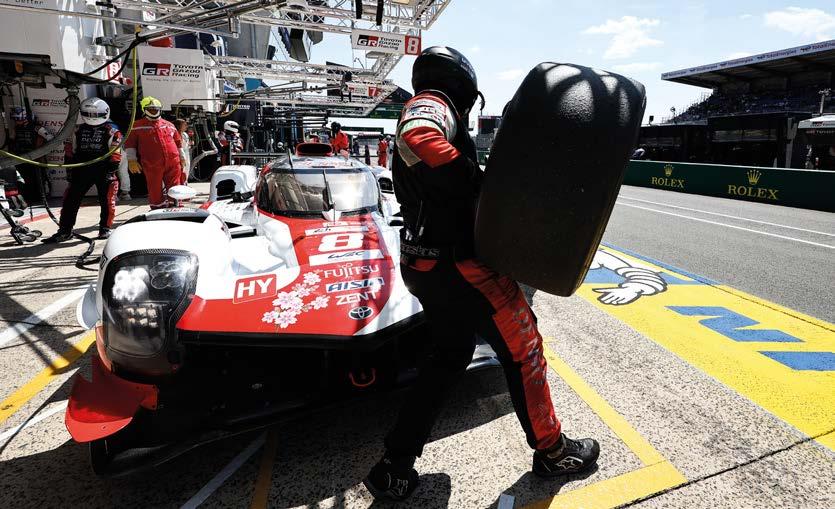Hydro-matic
The ACO is introducing a hydrogen class for Le Mans in 2026, and the cars will be racing for overall victory against the current Hypercars. Racecar talks to Bernard Niclot, the man behind the regulations, to nd out how
By ANDREW COTTON
That the Automobile Club de l’Ouest is to introduce hydrogen to its Le Mans grid in 2026 is not a surprise. A technical director of the FIA, Bernard Niclot, has been working on the regulations since 2017, the ACO has involved itself heavily in the development of a hydrogen fuel cell prototype and the regulations are ready to be written. The surprise is that the new cars will be going for outright victory at Le Mans from 2026.
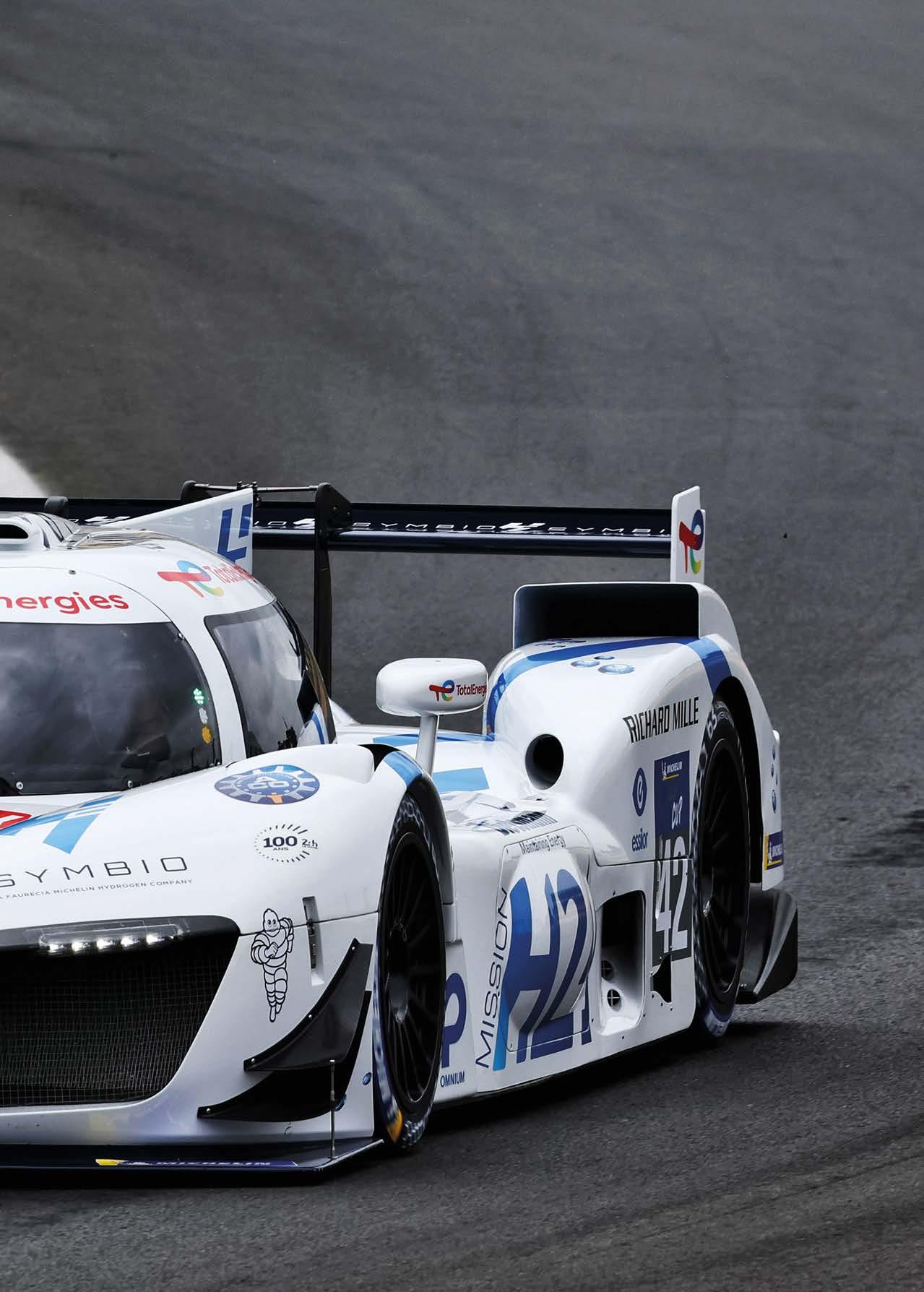
The plan is to finalise the regulations by December 2023, to allow manufacturers time to start looking into the technology, and understand what it has to offer.
Ten manufacturers are sitting around the table to thrash out the rules. While no one was willing to reveal the identity of the ten, they do pan the globe from Asia to the US via Europe. Some have already announced their intention to compete at LeMans with hydrogen-powered cars, notably Toyota,
AUGUST 2023 www.racecar-engineering.com 21
The ACO-backed MissionH24 hydrogen-powered racecar on track at Le Mans during this year’s centenary parade
yellow safety zones, then you are slow for quite a long time, and the temperature in the tank has a tendency to increase because you don’t have a high flow rate. The ambient temperature then becomes important.
‘If you continue to decrease the pressure, there is a risk you achieve your stint with low pressure, which means not so much hydrogen on board, but with a high temperature in the tank, so you don’t start refuelling at -40degC, but at maybe -30degC, or zero, or even +20degC. Then you can only put less hydrogen in. So, you have to manage it so that when the tank is empty you are around -40degC.
‘On the other side, if you have a very quick race where you consume a lot of hydrogen, then the risk is you decrease the temperature in the tank too quickly, and so you achieve the -40degC lower acceptable limit when the tank is not yet empty, and then you have to stop.
‘It is clear that management of temperature and pressure must be consistent during the whole stint, and this becomes an element of competition. This could provide a performance reward.’
This careful management of hydrogen temperature and pressure is a relevant technology for road cars, too. Electronics would play a major part in this performance element and, as the Hypercar regulations are effectively already a software war, this fits nicely with what is currently on track.
Say no to NOx
The other issue with low CO2 emissions, particularly around petrol and diesel, is the high NOx emissions. The two are inextricably linked until, that is, you start to look at hydrogen technology.
‘With fuel cells you have no NOx,’ notes Niclot. ‘With hydrogen ICE you reject water. Now, it is true that depends on the level of mixture. If you have a lean mixture, you will not have the same level of NOx. The beauty with hydrogen, though, is that you can have combustion with very lean mixtures, thanks to the speed of flame of the hydrogen. You can work at lambda 2.5-3. If you work in this range, you have almost no NOx, because you are working at a low combustion temperature.
‘If you work with richer mixtures, then you do have NOx and you have to treat them with catalytic converters. This is a point we have to discuss with the manufacturers. We want to be zero emission, and need to discuss how we achieve this, either with the characteristics of the mixture, or the use of catalytic converters.’
Another obvious issue is crash testing. Running any racecar with high pressure gas tanks onboard is not for the faint of heart, so the FIA and the ACO have to come together
Ligier JS2 RH2
One of the least likely offerings launched at Le Mans was the Ligier JS2 RH2. Developed with Bosch as a GT car, the team was hoping it would be accepted into the top class for the Le Mans 24 hours. The car features a full carbon monocoque with three hydrogen tanks, each housed outside the monocoque, encased in individual protective sheaths.
The engine, says the team, has been on the test bench for 18 months, and with hydrogen as a fuel it has the same power and driveability as a petrol car, with only a small change to the ignition system.
‘Just inside, using Bosch facilities, we can cool to -40degC, and we can expect [a refuelling time of] below five minutes,’ says Pierre Humbert, project manager at Bosch. ‘In cold conditions, maybe two minutes, in hotter conditions, maybe four minutes, or higher. When you put hydrogen in the tank, you are contemplating your temperature rise and you cannot go above a certain level.’
For Bosch, investigating hydrogen is a key technology. ‘As an engineering service provider, we are open to technology and see it as our task to explore the various technical options on the path to climate-neutral mobility in parallel, and to devise the best solution in each case for all the requirements of our worldwide customers,’ says Dr Johannes-Jörg Rüger, president of Bosch Engineering GmbH.
‘In this context, hydrogen propulsion has great potential, especially for use in motorsports and high-performance roadgoing sports cars.’
With Bosch as development partner, the new Ligier is the first hydrogen-powered GT car
to produce a set of regulations that will be safe, above all else. That means rigorous testing, and that will probably lead to the cars carrying more weight. This, in turn, could have a knock-on effect for the Equivalence of Technology tables.
Niclot’s argument on this front is an interesting one. Many are looking at the current Hypercar regulations and noting that with only three spaces on the podium, and eight manufacturers competing, there will be some who won’t achieve their objectives and will leave. Or they will achieve their objectives, and then leave. That then puts the emphasis back onto the privateers on which racing has always relied.
Round table
But for Niclot, having 10 manufacturers around a table wanting to come to Le Mans with a new technology and compete for an overall win, their might would be enough to sway the regulators.

It would come at the expense of the privateers initially, and that cannot be said lightly. Nor can its effect be underestimated.
‘We want to have a classification for the hydrogen category, but we want to have those cars able to win against gasoline Hypercars. We think they can achieve this provided they have enough performance, so 3m30s, which is the current level,’ says Niclot.
‘We will therefore have an EoT between hydrogen and gasoline cars. It is the same idea.
‘At the end, this category will arrive in 2026 / ’27, near the end of the Hypercar golden age, so the transition will be quite smooth. If we had started in 2024 [there was a two-year delay due to Covid], we would have had more problems because we will have new Hypercars and it would have been difficult to tell them they must compete against hydrogen cars. The delay will make the transition easier, so I am quite confident.’
The ACO has long pushed for hydrogen cars to race at Le Mans, and will soon have its chance to do so.
26 www.racecar-engineering.com AUGUST 2023 LE MANS HYDROGEN FUTURE
‘It is clear that management of temperature and pressure must be consistent during the whole stint, and this becomes an element of competition. This could provide a performance reward’
Bernard Niclot
H2O replaces CO2 - Water injection for gasoline engines


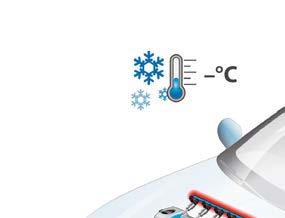

Tesona‘s WaterInjection System is an innovative development for powertrain systems that taps into yet unimagined e ciency potential of internal combustion engines. It not only makes ICEs more fuel-e cient and lowers emissions, it also enhances the fun to drive.
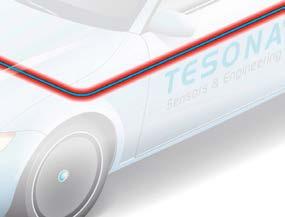

Increased torque even at high enginge speeds

–CO2

Reduced emmisions
System pressure: up to 12bar
Flow rate: up to 120l/h
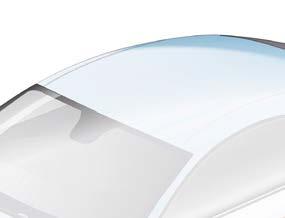
Environmental temp.: - 40 °C … 80 °C




Medium: Deionized Water



E ective cooling of combustion chamber and exhaust gas


Extra boost for the turbocharged engine!

tesona.com
waterboost@tesona.com

AUGUST 2023 www.racecar-engineering.com 27
"Enhancing Performance and increasing efficiency“
Ducts from the air inlets provided fresh ram air to the inlet manifold of the 2J, carried over from the 2H. In the foreground, attached to the rear suspension by a Bowden cable, is the bell-crank linkage that kept the Lexan side skirt close to the ground as the rear of the Chaparral rose and fell over bumps
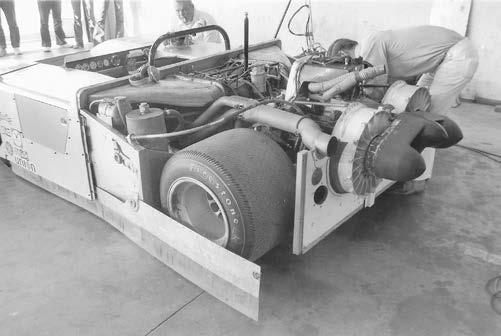

amount the car was calculated to be pulled down by suction to its operating height. From that datum line, the springing allowed three inches of travel in both jounce and rebound.
To take advantage of its downforce, the STV wore the widest wheel rims it could accept and the widest Firestone racing tyres available at the time. Disc brakes were internally vented for cooling.
As the 1969 Can-Am season progressed, the faults of Hall’s Chaparral 2H were found to be many and insoluble. This was not surprising to Chevrolet, who knew that Hall’s chosen approach – a car built for maximum speed with little attention to downforce –would not work on the Can-Am circuits.

Meanwhile, tests of the STV were attracting attention at Chevrolet R&D.
‘The first time the auxiliary motor fan drive system was fired up, it literally smoked out the engineering lab,’ recalled Van Valkenburgh. ‘It became rather embarrassing to have around… so ridiculously sensational that everyone was talking about it.’
Hall and Gates
In the spring of 1969, Hall asked Don Gates to join his effort to sort out the 2H. Chevrolet decided that as the STV was Gates’ baby, the semi-finished vehicle might as well accompany him to Midland. It was shipped there in September of that year.
Jim Hall obtained the services of reigning world champion, Jackie Stewart, as pilot for the Watkins Glen race. Despite a number of problems during practice, he qualified third behind the factory McLarens of Dan Gurney and Denny Hulme
Originally, the cogged rubber drive belts from the auxiliary engine to the two extractor fans were located inboard of the fans, but debris sucked up from the road dislodged the drive belts, so they were re-located outboard mid-season and enclosed by a cover nicknamed the Martian bra by one team member
As originally built by Chevrolet, and made whole to run at Rattlesnake, the STV’s rear wheels were exposed in conventional fashion. Suction was applied over an area the width of the car and the length of the body between its wheelarches. Suction fans were mounted low at the sides of the body, flanking the engine and individually driven by small twostroke motors.
In tests beginning in the November of 1969, this arrangement did give substantial downforce, but the car’s handling was treacherous. ‘Regardless of how much basic understeer was incorporated with the fans off,’ said Van Valkenburgh, ‘when they were turned on the car oversteered uncontrollably. Apparently, the centre of downward pressure was too far forward. But, in spite of all the problems, with the fans working, it was as fast as any other car ever run at Midland.’
While Jim Hall was increasingly cool to ‘someone else’s Can-Am car’, the STV found a defender at Midland in Tom Dutton, an engineer / driver who had joined the team during 1969. ‘Practically everyone else viewed the project with either distrust or malice,’ recalled Van Valkenburgh. Yet in Dutton it found a driver that was able to prove to the sanctioning Sports Car Club of America that the car would not be wildly uncontrollable if, or
when, downforce was lost. The SCCA also judged it acceptable, despite FIA rules prohibiting moveable aerodynamic devices.
The Dutton effect
To address the handling problem, Gates re-conceived the rear of the STV. Mocking it up with plywood, the rear of the body was rebuilt to enclose the wheels, nearly doubling the area of suction downforce. In tests of this version at Rattlesnake, Van Valkenburgh noted, ‘Dutton was able to circle the skid pad at a fantastic lateral 1.7g! This was a major jump from the previous best of 1.3g. Dutton then went out on the
50 www.racecar-engineering.com AUGUST 2023 RACECAR FOCUS CHAPARRAL 2J
The advantage of having an auxiliary engine was, of course, that downforce was present at all times, especially at low speeds where the extra downforce is most effective, and where wings don’t work at all
The Chaparral 2H carried over Chevrolet’s torque converter transmission with a threegear, dog-clutch ’box. Perched on top of this was the two-cylinder, two-stroke, aircooled JLO snowmobile engine that drove the twin extractor fans. Note the internally ventilated disc brakes

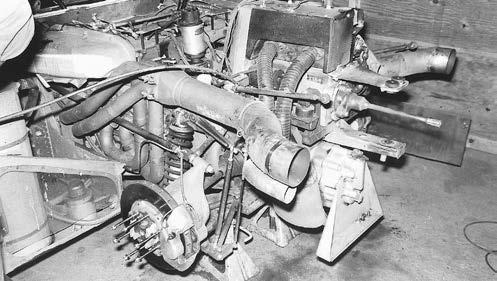
After it suffered from vapour lock, Chaparral engine man, Gary Knutson, equipped the JLO auxiliary engine with fuel injection and capacitive discharge ignition to enhance its reliability. Even then, the driver had to constantly monitor its cylinder head temperature and adjust the mixture accordingly, whilst driving flat out!

road course and knocked nearly two seconds off Hall’s previous best time.’
This won respect at Midland, where the STV was previously given such a sceptical reception. Now accepted as a potential Chaparral, it was given the 2J designation, 2I being skipped. However, it still needed substantial rebuilding and testing before it could become a bona fide racecar, timeconsuming effort that had to concede priority to Hall’s agreement to take over Chevrolet’s Trans-Am Camaro programme.
Its demands meant the 2J missed the first two Can-Ams but was ready – just – for the third one at Watkins Glen on 12 July 1970.
Fan club
Preparations for that race included extending the aluminium honeycomb box to shroud the rear wheels entirely and complete enclosure of the rear of the car. The suction fans were now mounted at the extreme rear and driven by a single central auxiliary engine.
‘An alternate plan to use a variable-ratio snowmobile belt drive off the transmission was set aside as too complex,’ Van Valkenburgh related, ‘but, as it turned out, that might have proved more dependable.’
The new arrangement placed some 200lb of fans and engine high in the air, cantilevered out over the tail – not ideal for the car’s centre of gravity. Suction was

Providing the vital seal at the front of the suction area was a transverse row of a dozen Lexan pieces. Designed by Chevrolet’s Don Gates, each comprised an individual system, with a hinge to the body, and each was backed up by two more Lexan parts, hinged to harness both spring and vacuum force to keep its trailing edge on the track
generated by radiator cooling fans from an M-109 self-propelled howitzer. They had 17in blades, aluminium castings made by the Pesco Products Division of Borg-Warner, whose catalogue said that each fan could pump 9650ft3 of air per minute when spun at 6000rpm, while maintaining a static pressure of 11in of water, or 0.027bar.
Driving two of these fans, through cogged rubber belts and magnesium sprockets, was the best engine Chaparral could find for the job: a German-made JLO, two-stroke, air-cooled twin imported by Rockwell, giving a rated 45bhp at 5500rpm. This motor was judged reliable after engine man, Gary Knutson, fitted a capacitordischarge ignition system to overcome problems caused by dirt getting into the points of its conventional coil ignition. Problems with blade erosion from roadway debris were tackled by fitting each fan blade with a steel leading-edge guard.
The fans were evidently slightly underdriven, relative to engine speed (about 5000rpm) because their gross horsepower requirement at 6000rpm was 52bhp – 7bhp more than the JLO engine could deliver. That was still enough to maintain a vacuum of 0.020bar under the skirts when the car was at rest or moving slowly.
The advantage of having an auxiliary engine was, of course, that downforce was
present at all times, especially at low speeds where the extra downforce is most effective, and where wings don’t work at all.
Skirt system
Crucial to the creation and maintenance of downforce was a system of skirts that surrounded the suction area and remained as close to the ground as possible. The closer they conformed to the road, the more effective the suction from the fans would be. But, in being close to the road, they inevitably made contact at times.
To permit this without having the skirts bent or broken, they were made of General Electric’s tough Lexan plastic material.
The side skirts were simple 2.3mm sheets suspended from lever arms that adjusted their height in response to suspension movement through push-pull Bowden cables. The side skirts went up and down with the wheels and the rear skirt followed them, being linked to the side skirts at its ends.
The front skirt presented the greatest problem. Running across the car just behind its front wheels, it was crucial to the system’s success. While the fans worked hard to pull air out of the suction chamber, the car’s forward motion tried to ram air into that chamber. To minimise the extent of the pressure with which this forward skirt had to cope, the
AUGUST 2023 www.racecar-engineering.com 51
Stripped of its front and rear body sections, the 2J reveals its deep central aluminium monocoque structure. The hinged ‘doors’ met the letter of the Can-Am regulations. Standing behind the car in sunglasses is Cameron Argetsinger, who had joined Chaparral Cars as a vice president in 1970
X marks the loop
Racecar investigates the latest advances in simulation, and how in-the-loop testing is bringing together all aspects of racecar design and development
 By LAWRENCE BUTCHER
By LAWRENCE BUTCHER
rapidly from basic racing sim’ packages to driver-in-the-loop and now to everything in the loop, from software, hardware to mechanical hardware, all of which have become invaluable in racecar development
66 www.racecar-engineering.com AUGUST 2023 SIMULATION XINTHELOOP TESTING
Simulation technology has developed
The boundary between the virtual and physical world is constantly evolving and becoming ever more blurred. Nowhere is this truer than in the realm of the development and testing of vehicles, both in mainstream automotive and motorsport. The virtualisation of testing through simulation and modelling allows for much expensive physical prototyping to be avoided, and is now a necessity in many current racing series, thanks to extensive restrictions on track testing.

However, there is only so much that can be achieved in the purely virtual domain, and the sooner physical components can be introduced into the picture the better.
This is where X, or everything-in-the-loop testing, comes into play. Put simply, it’s the integration of physical and software components into models and, not to be forgotten, the driver. Various in-the-loop testing methods have been commonplace in racing for years, but the arrival of electrified powertrains has increased their importance considerably. Racecars are now heavily software dependent. Thirty years ago, there was only really an engine and its associated ECU to worry about. Now some cars incorporate multiple motors, inverters and battery systems in addition to the ICE, as well as elements such as brake-by-wire systems.
Ensuring these are singing together in perfect harmony requires a system level approach to simulation and testing.
To complicate matters further, the various hardware and software elements invariably become available at different stages in the development process, and this is where hardware and software-in-the-loop testing can be invaluable in proving out these complex systems well in advance of the car hitting the track.
SILS, HILS and MHILS
The various branches of in-the-loop simulation can be divided into three main categories: software, hardware and mechanical hardware-in-the-loop. Add to this driver-in-the-loop, with the possibility to combine these various approaches.
Software-in-the-loop simulation (SILS) is where the control code of a device, such as an engine control unit (ECU), is tested using a simulation model. In this case, the model represents an engine – which can be relatively simple or highly complex, including elements such as combustion modelling – and provides inputs to the control unit software, which responds as if it were being run by the control unit.
The outputs generated by the software are then fed back into the model. This enables checking and modifying the functionality of the control software, as well as investigating the impact of refinements on the overall operation of the model and the final, physical engine.
A crucial aspect of this simulation is the availability of a flexible computing resource that can replicate the functionality of a fully developed embedded controller. These dedicated units, known as target machines, are essential for running control designs that will eventually be implemented in an embedded control unit.
During the initial testing phases, before committing to building an embedded controller, it is advantageous to have a more adaptable platform that allows easy addition of input / output (I/O) and protocol support.
AUGUST 2023 www.racecar-engineering.com 67
This sophisticated approach allows engineers to come as close as currently possible to replicating a car’s on-track performance, and gain a comprehensive understanding of the intricate interactions between the numerous on-car systems
































 By LAWRENCE BUTCHER
By LAWRENCE BUTCHER

